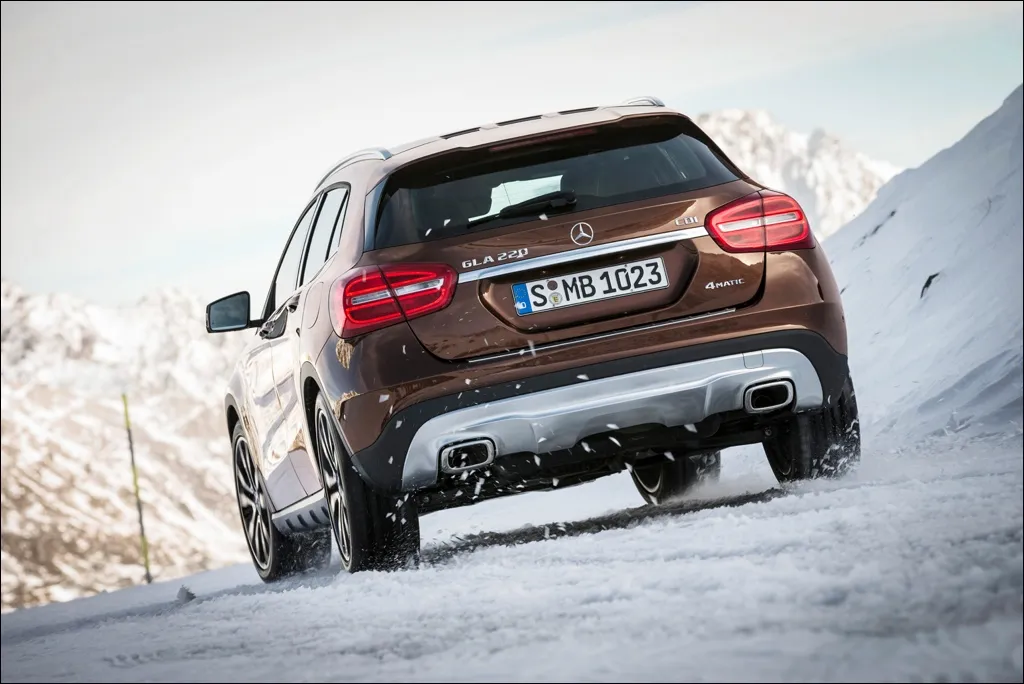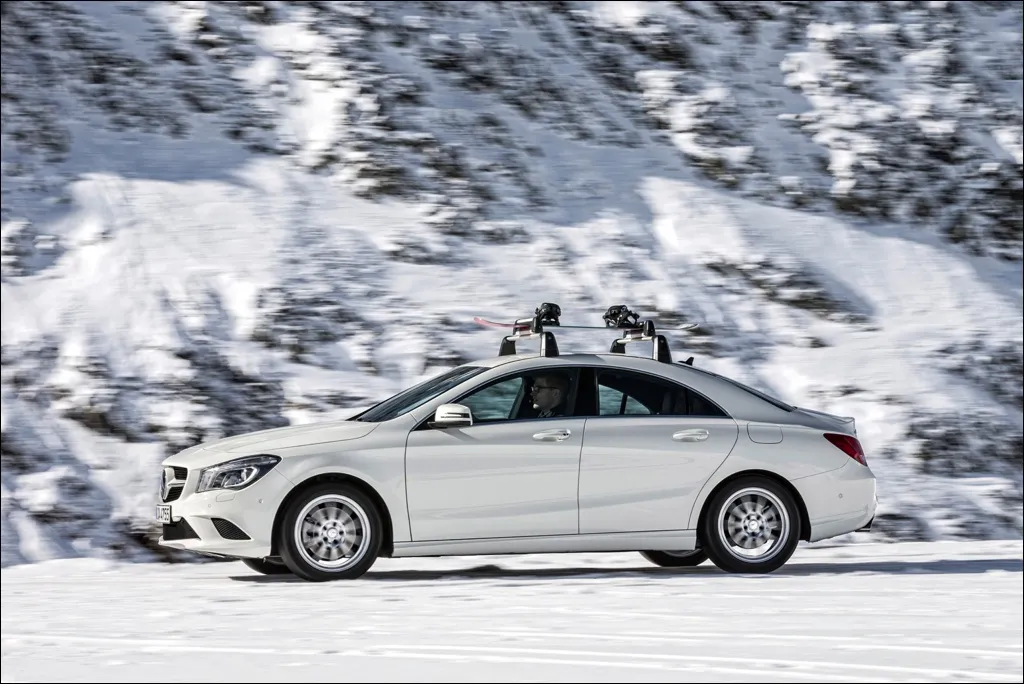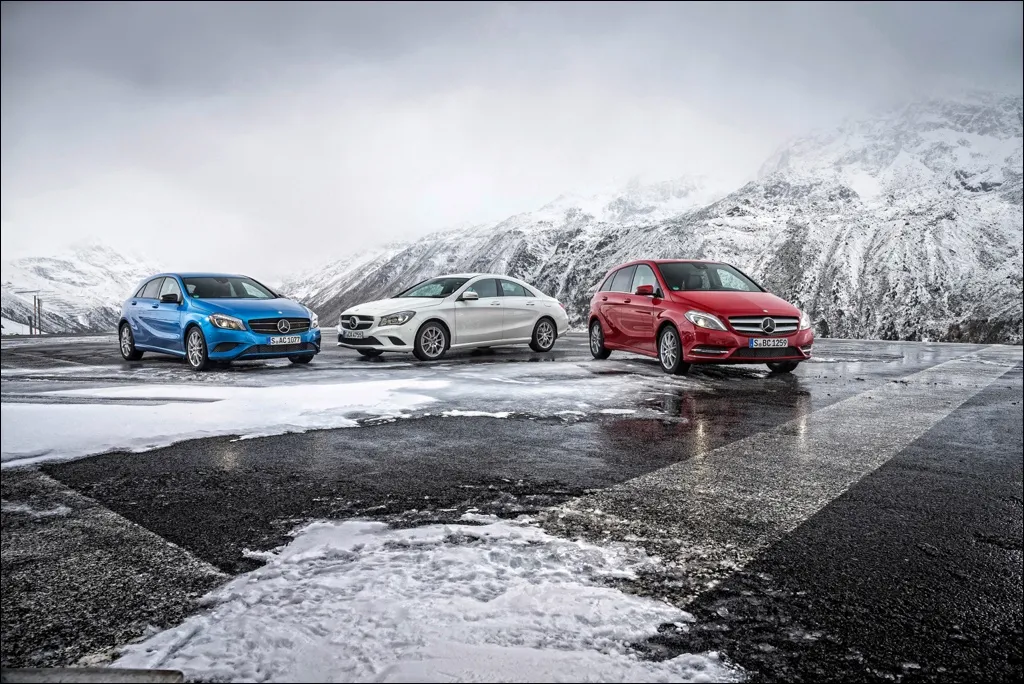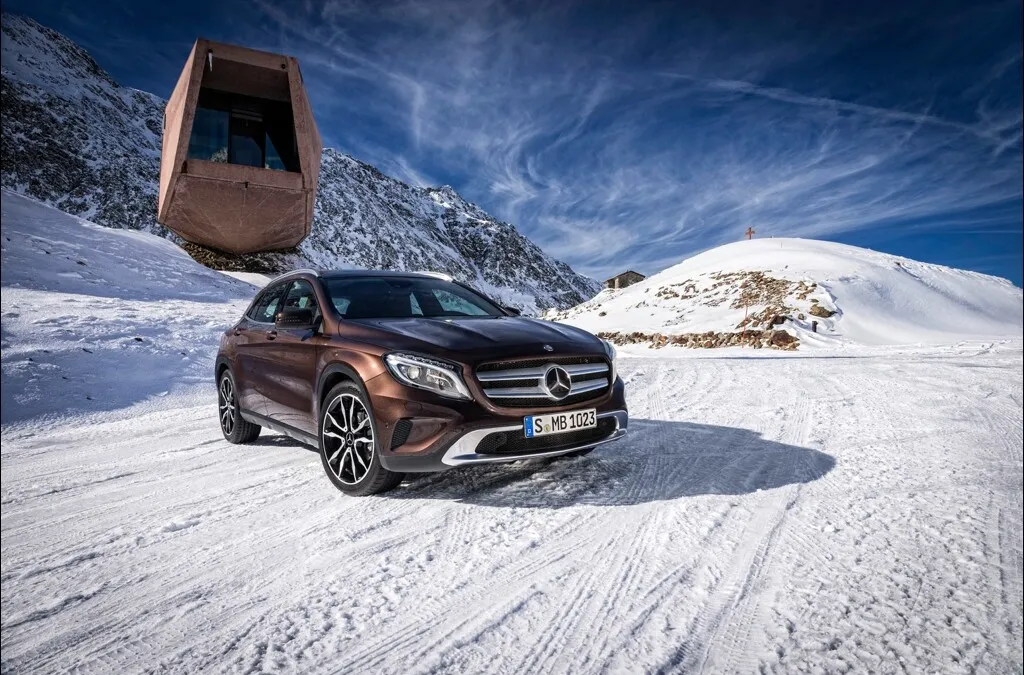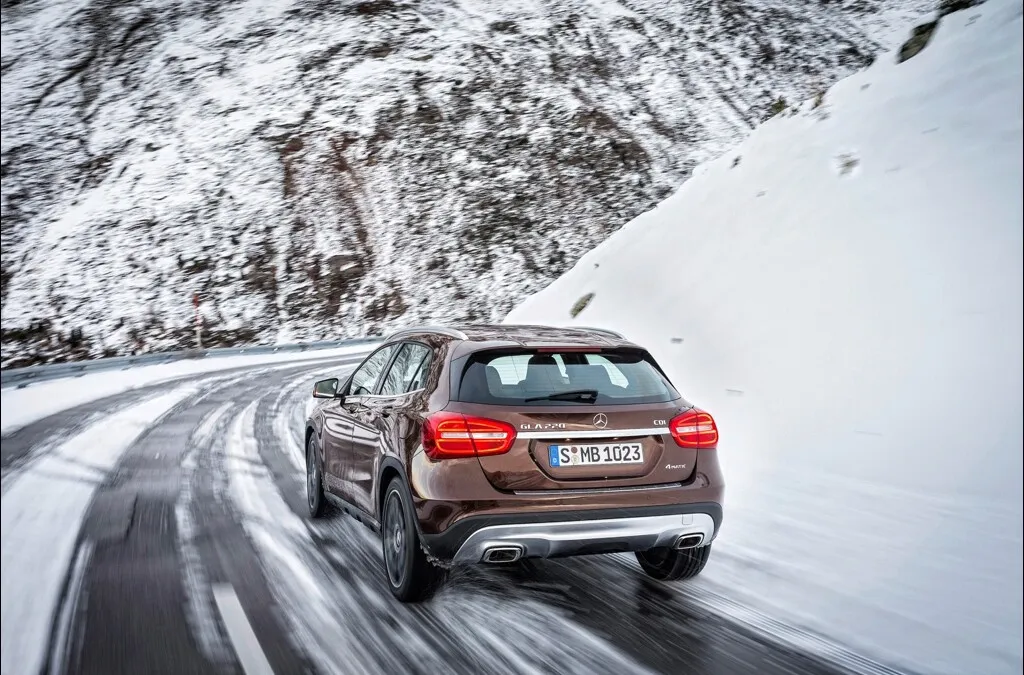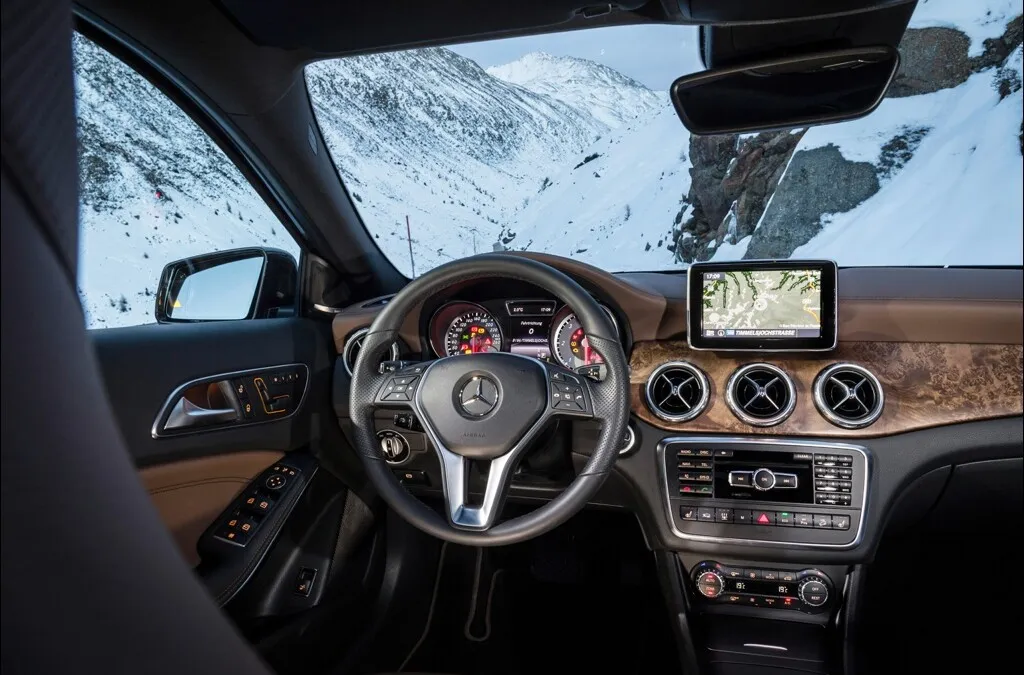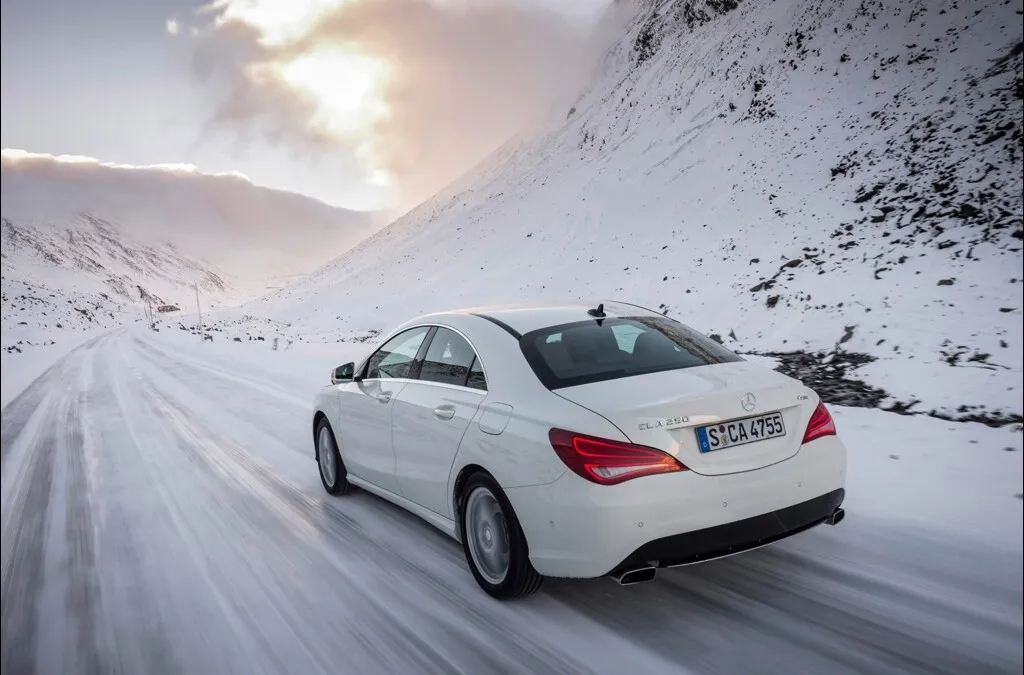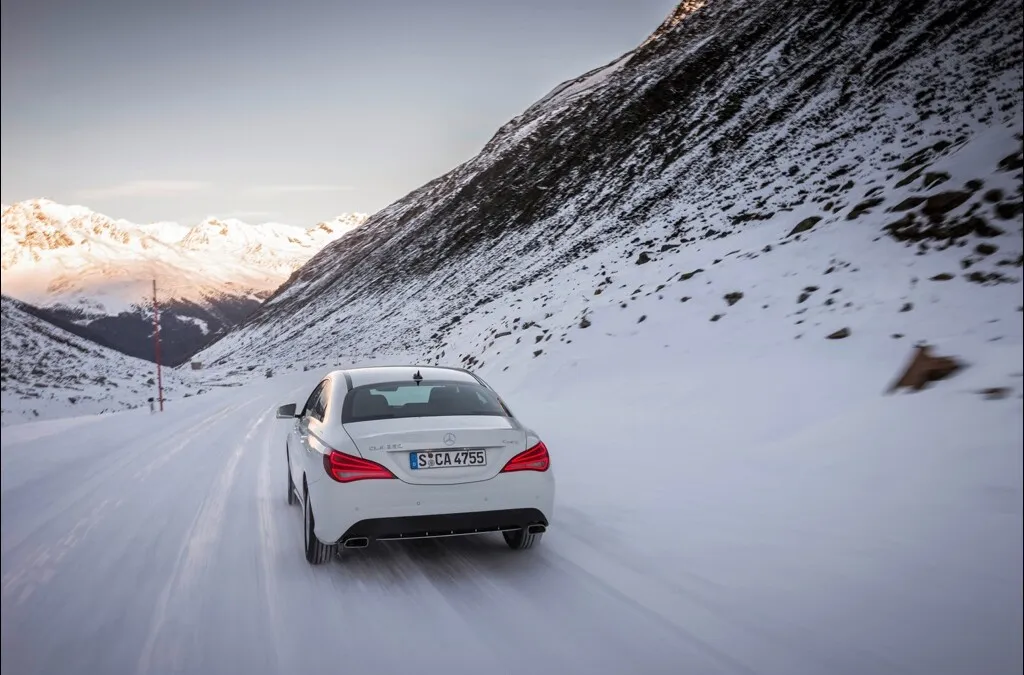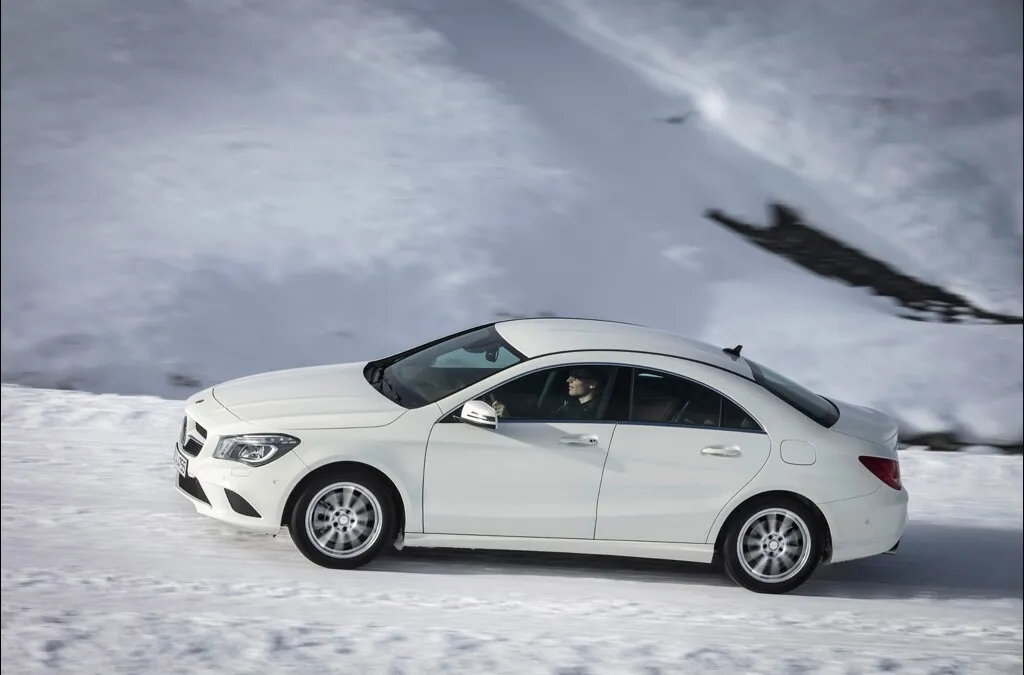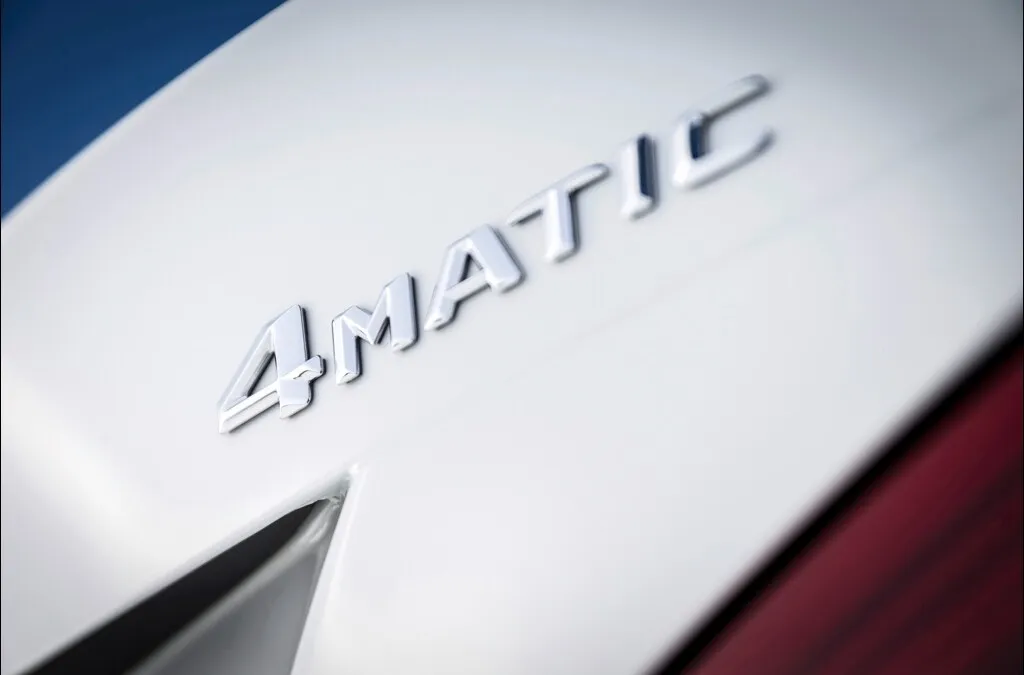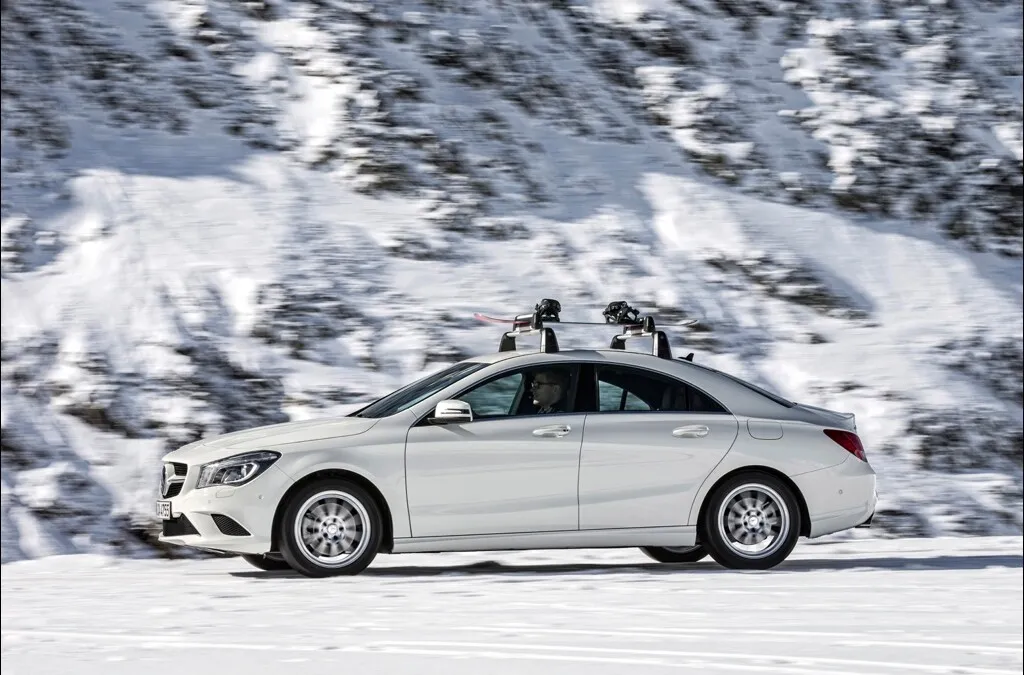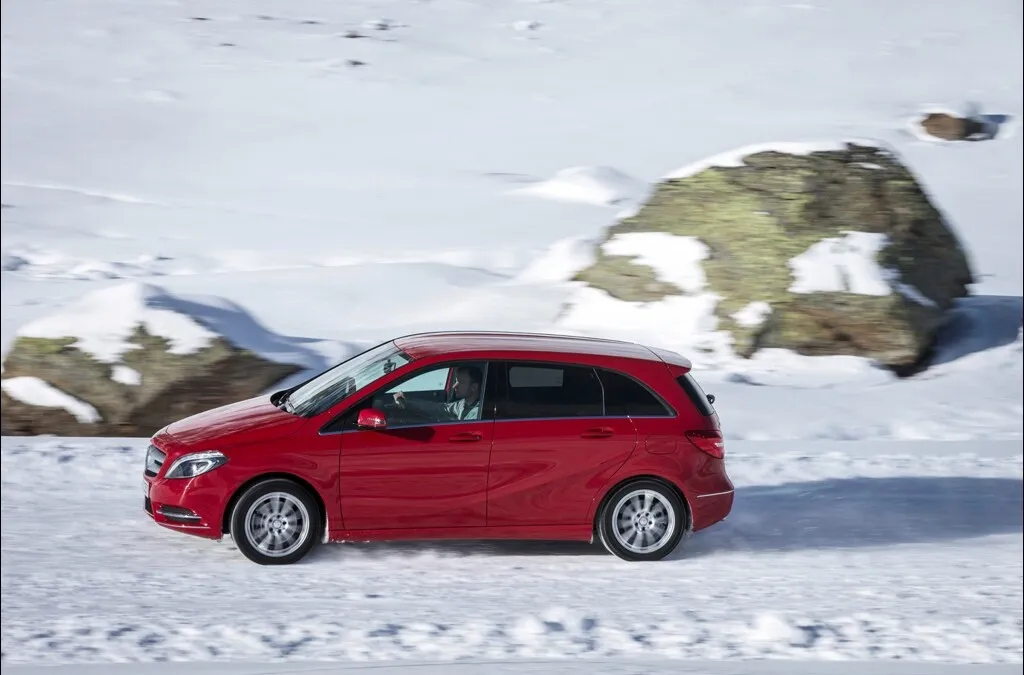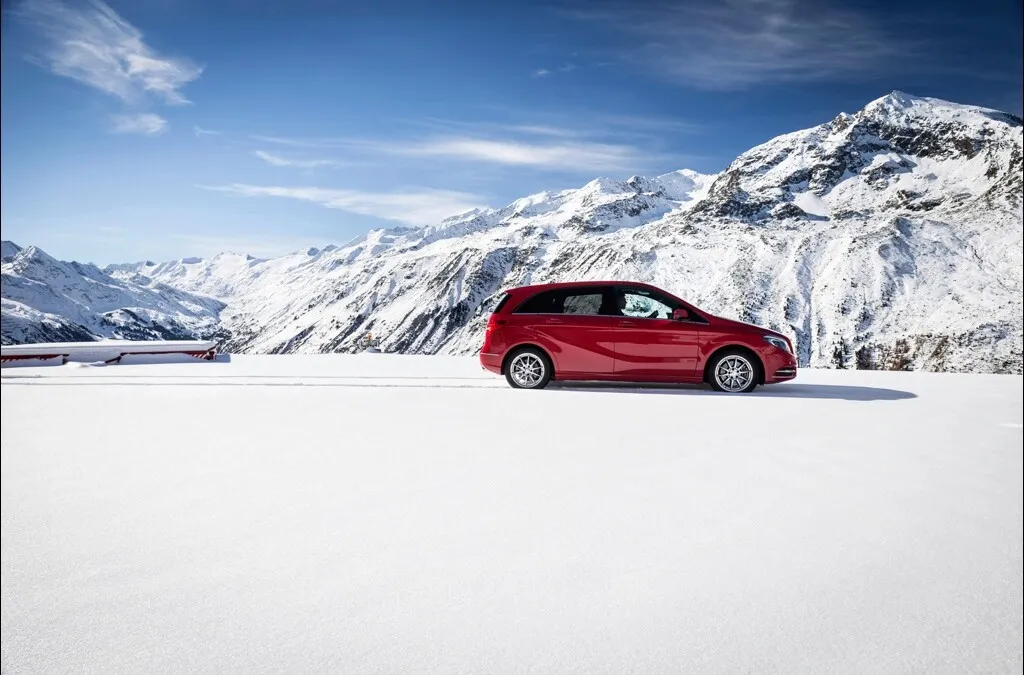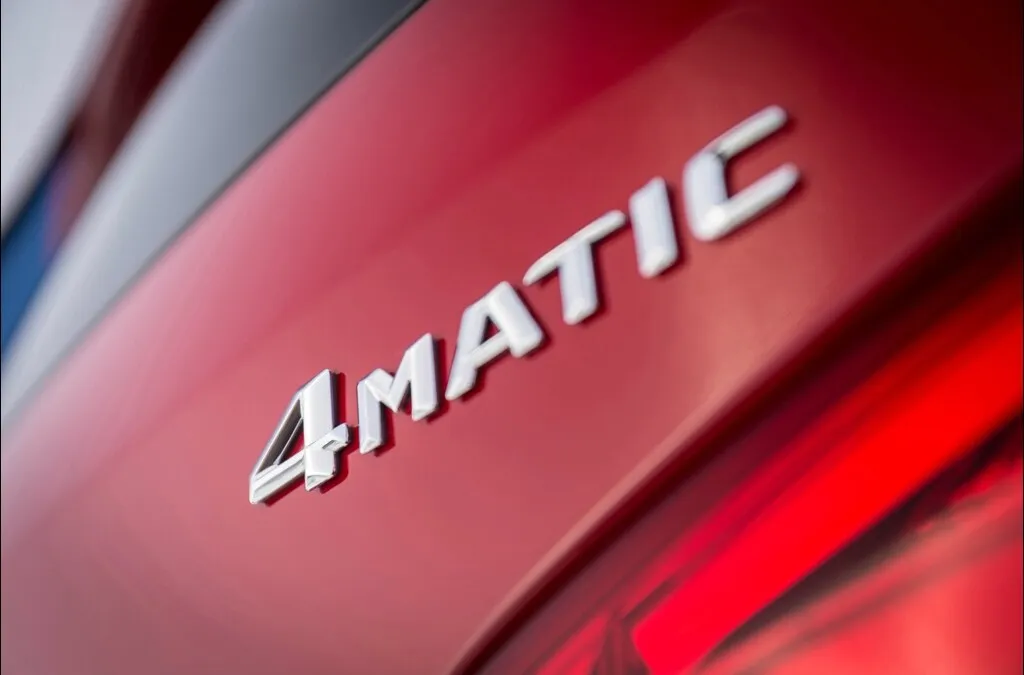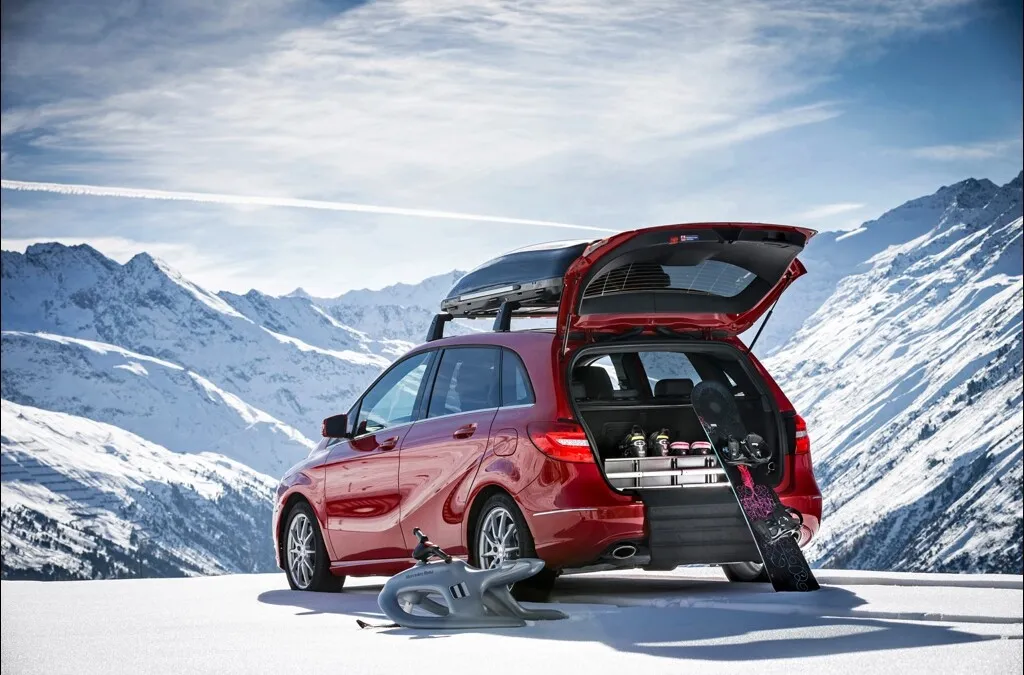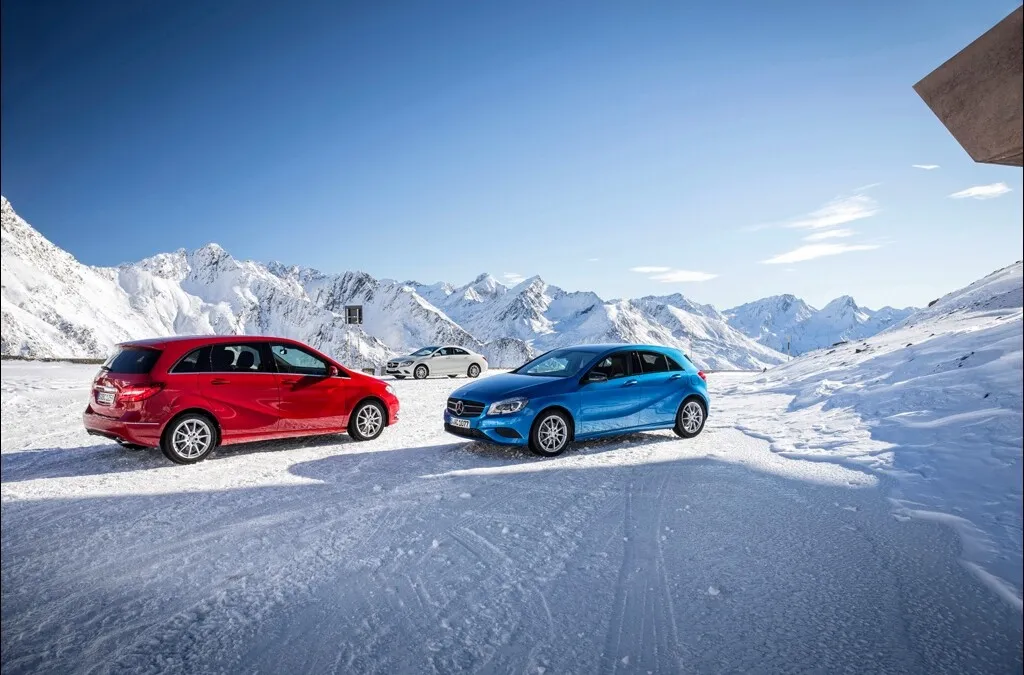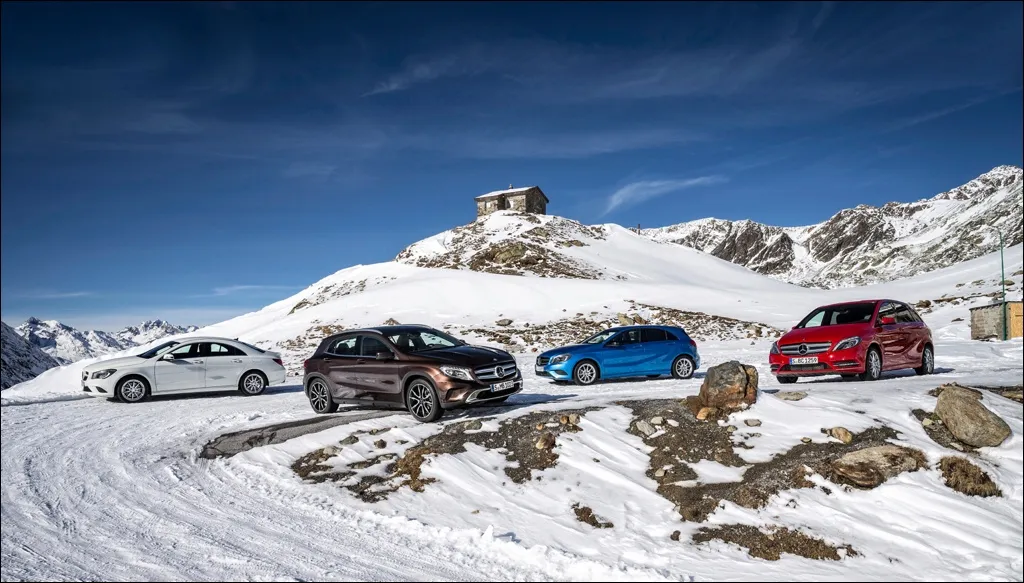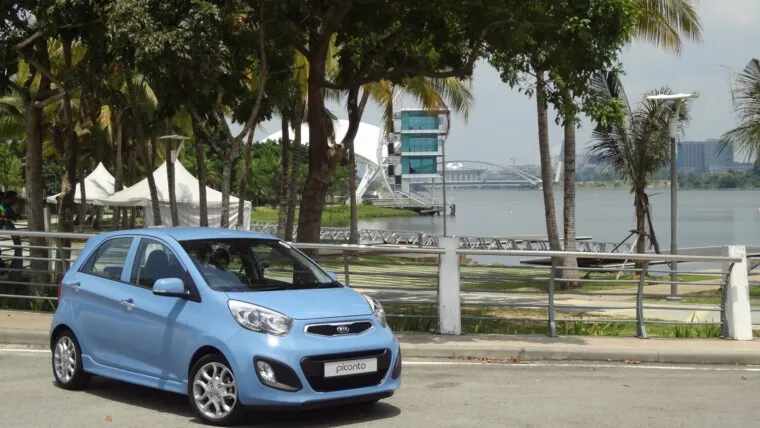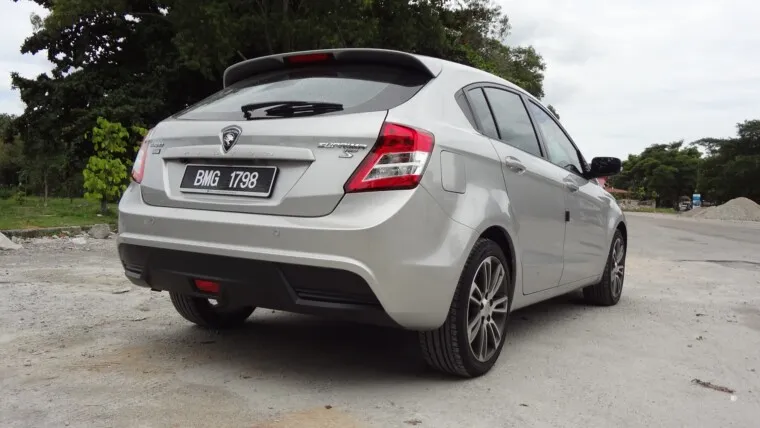The 4×4 family from Mercedes-Benz currently comprises more than 60 models. This means that a 4×4 technology solution tailored to the respective vehicle class is always available – from the new compact class model family and the vehicles of the C, E, S, CLS and CL-Class, through to the comprehensive range of SUVs and cross-country vehicles that make up the GLA, GLK, M, GL and G-Class ranges. Features common to all include high reserves of traction and outstanding agility, along with optimum handling safety and energy efficiency.
At this year’s 4MATIC Workshop taking place in the wintery conditions of Hochgurgl, Austria, the focus is squarely on the compact class model family. The A, B and CLA-Class are now all optionally available with the new generation of the 4MATIC permanent all-wheel-drive system featuring fully variable torque distribution. In addition, from March 2014 the new GLA will be joining the Mercedes-Benz SUV model range.
The most innovative components of the new 4MATIC include the power take-off to the rear axle, which is integrated into the 7G-DCT automated dual clutch transmission, and the rear-axle gear unit with integrated, hydraulically actuated multi-disc clutch. This set-up allows fully variable distribution of the drive torque between the front and rear axles. Additional benefits of this design are a lower system weight compared with the competition and also high efficiency. As with their front-wheel-drive counterparts, all 4MATIC models also boast good energy efficiency.
Integrated power take-off unit (PTU) channels power to the rear axle
The new 4MATIC is combined with the 7G-DCT seven-speed automated dual clutch transmission. The power flow to the rear drive train is provided by a compact power take-off unit (PTU) which is fully integrated into the main transmission and is supplied with lubricant from the latter’s oil circuit. This configuration gives rise to substantial weight advantages over competitor systems that branch off power by means of an add-on component with its own oil circuit. In conjunction with the friction-minimised tapered roller bearings, the PTU thus achieves an excellent level of efficiency.
The low system weight of the 4MATIC system is not attributable solely to the PTU. Other weight-stripping measures include a compact rear-axle gear unit, inductively hardened, weight-optimised rear-axle side shafts and weight-optimised drive shafts. The system weight of this 4MATIC is up to 25 percent lower than in the all-wheel-drive versions offered by the competition.
The two-piece drive shaft is vibrationally decoupled. An axially moving joint at the front compensates for longitudinal movements of the engine transmission unit, while an elastic flexible coupling reduces the intrusion of high-frequency gearing vibrations at the rear-axle gear unit. To minimise crash loads, the drive shaft is fitted with an extendable element.
Completely new development with torque-on-demand rear axle
The hydraulically actuated multi-disc clutch integrated into the rear-axle gear unit is responsible for fully variable torque distribution. Fundamental operating principle: when the multi-disc clutch is open, the car is driven exclusively by the front axle. When the clutch is closed, the rear axle comes into play. However, the drive torque can be shifted in fully variable mode between front and rear axle according to the given situation (torque on demand)
The system pressure to activate the rear axle is supplied in milliseconds by the gerotor pump that is integrated into the rear-axle gear unit. The pump is activated automatically as soon as only minimal speed differences arise between front and rear axles, and pressure control and therefore torque control to the rear axle is performed by means of a proportioning valve integrated into the rear axle.
Motoring enjoyment thanks to intelligent control systems
The 4MATIC is activated according to the basic principle of “as often as necessary, as rarely as possible”. This means that when the underlying conditions allow, the all-wheel-drive compact models run in particularly economical front-wheel-drive mode. As soon as the driving situation requires, drive torque is channelled to the rear axle as appropriate. The reverse process takes place just as quickly: as soon as additional drive torque is no longer necessary at the rear axle – e.g. in case of heavy braking manoeuvres with ABS intervention – the rear drive train is deactivated and torque is reduced to zero.
In case of impending understeer or oversteer under load, the drive torque is first of all distributed in such a way as to stabilise the vehicle. Only if these measures fail to have a stabilising effect do the control systems adapted to the conditions of 4MATIC, such as ESP® or 4ETS, intervene and keep the vehicle on course.
With this strategy, the developers have managed to combine two key requirements defined in the performance specifications: optimum energy efficiency coupled with maximum dynamic handling and driving safety.
Individual: transmission modes to suit personal driving styles
The torque distribution is also dependent on the activated shift program of the 7G-DCT dual clutch transmission. The ECO mode results in torque distribution of a more conservative nature. Less torque is channelled to the rear axle, resulting in gentler handling and supporting an economical driving style at lower revs. In SPORT or MANUAL mode the activation times are shortened and more torque is distributed to the rear axle in the interests of a dynamic, sporty driving style. GLA models with 4MATIC feature an off-road transmission mode as standard. In this mode, the shift points and accelerator characteristics are also adapted in such a way that the requirements for driving on light off-road terrain and particularly on loose surfaces can be met. On the AMG versions of the A and CLA-Class, adaptation of the 4MATIC control system takes place in accordance with the 3-stage ESP®.
Check out photos in the gallery below.



